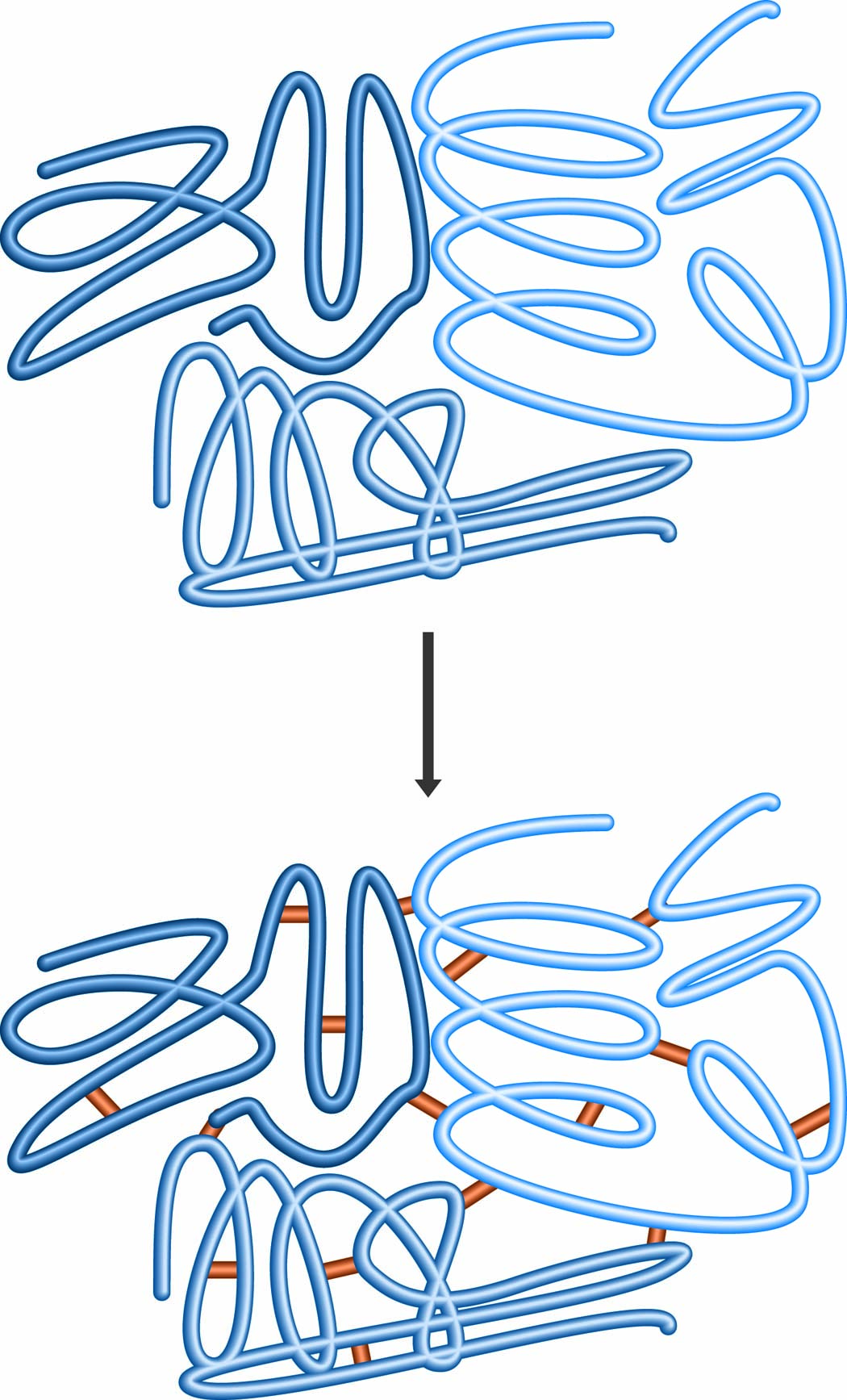Histology Fundamentals
Aldehyde Fixatives
Formaldehyde and glutaraldehyde are the most commonly used aldehyde fixatives. They work by forming cross-links both within and between proteins, particularly between lysine residues. Damage to the tertiary structure of the proteins occurs on a limited basis. Formalin (37% aqueous formaldehyde) is normally diluted 10 fold and neutrally buffered to make a working fixative solution consisting of 4% formaldehyde. The buffer prevents autolysis that occurs under acid conditions and also prevents the development of coloration of the tissue caused by formalin pigment.

Glutaraldehyde (normally used as a 2% buffered solution) causes deformation of alpha-helix structures in proteins, which limits its usefulness as a fixative for immunological stains. Glutaraldehyde is nonetheless a rapid fixative. As a result, it has become the standard for electron microscopy. Recently glutaraldehyde has become identified as a powerful allergen. A maximum exposure limit of 0.05mg/m3 has been imposed on laboratories in the United Kingdom, sharply limiting the use of this fixative there.
National Diagnostics' Mirsky's Fixative is an aldehyde based formula which is exceptionally good at preserving fine tissue structure and protein conformations. This fixative is an excellent replacement for Glutaraldehyde in EM applications. For light microscopy, Mirsky's Fixative is especially recommended for immunoperoxidase techniques where formaldehyde can lead to the loss of epitopes. The use of microwave enhancement can speed the action of Mirsky's Fixative greatly, allowing tissues to be embedded within a few hours.
Microwave Fixation Using Mirsky's Fixative
- Fix tissue blocks (<3mm on a side) in Mirsky's Fixative for 30 minutes at room temperature.
- Microwave vials in a microwave processor in 1-3mm thick blocks for 15 minutes at 55°C, or as directed by processor protocol.
- Transfer the block to 100% ethanol, and microwave for 4-8 minutes (increase time for thicker sections) at 67°C.
- Repeat ethanol/microwave treatment with fresh ethanol 2 times.
- Microwave in preheated paraffin for 7 minutes at 84°C.
NEXT TOPIC: Non-Aldehyde Fixatives
